Victoria's narrow-gauge railways - A brief history to 1953
Genesis
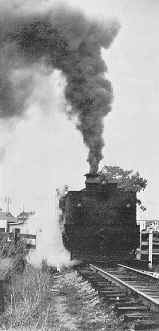
The major expansion of Victoria's 5 feet 3 inch gauge railway system occurred during the late 1880s and early 1890s. Between 1887 and 1892, no less than 1162 miles of track were added to the state's network, linking Melbourne with all of the major centres of population. During the ensuing five years however, only a further 208 miles of railway were built, the financial depression of the 1890s being the principal factor influencing the slowdown. At the same time, the Government of the day realised that the cost of providing communications to many outlying communities by means of railways was excessive for the relatively small population served. Since the only alternatives at that time were riverboats or drays drawn by bullocks or horses, it was necessary to seek a means to overcome this problem.
Photo:G42 departs Moe toward Erica on 7 July 1947. (R. B. McMillan)
A Parliamentary Standing Committee was set up to inquire into the possibility of providing communications services by means of narrow gauge railways or tramways. These could be laid as surface lines with few facilities and could follow the natural contours of the land, with consequent savings on earthworks and civil engineering construction. Elsewhere in the world at this time there was taking place a great expansion in light railway construction, of both standard and narrow gauge, the latter exploiting and developing Charles Spooner's pioneer work on the Ffestiniog Railway in North Wales. Parliament on 10th October, 1895, recommended the adoption of a gauge of 2 feet for no less than 14 proposed lines, subject to further investigation as to needs and potential traffic.Following advice received from Mr. H. C. Stanby, the then Chief Engineer of the Queensland Government Railways, and from Mr. E. R. Calthrop, Locomotive Superintendent of the Great India Peninsula Railway, the gauge recommendation was altered to 2 feet 6 inches. A strong influence in this change was Mr. Calthrop's experience in building the Barsi Railway, then under construction in India.
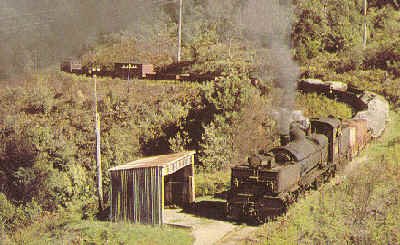
Mr. Calthrop later achieved notability as the engineer of the Leek & Manifold Railway in England, also of 2 feet 6 inches gauge and closely following the example of its Indian predecessor.The findings of the Committee were brought down in the Victorian Parliament. Despite the misgivings of the Victorian Railways Commissioner, John Mathieson, construction was immediately started on three of the proposed lines and thus yet another gauge was added to those already established in the Australian railway scene. The benefit of hindsight notwithstanding, it is difficult for us now to imagine just how isolated Australia was from the rest of the world in those days. Each state was effectively a separate colony, the unity of federation still to be achieved. Steam ships were a comparative novelty and their visits extremely rare so communication between the states was normally by sailing ship.
The now-infamous plethora of railway gauges in Australia is the result of each state establishing its own independent railway system, with little or no forethought toward future inter-connection between states and capital cities. As to why Victoria should adopt 2 feet 6 inches as the gauge for its new lines on the advice of an engineer working in India rather than build to either the South Australian narrow gauge of 3 feet 6 inches or the Queensland 2 feet gauge, we can only guess. Suffice it to say that whilst four states used the 3 feet 6 inch gauge, there was minimal standardisation of locomotives or rolling stock so perhaps uniformity of a narrow gauge would have served little purpose.
Photo:G42 passes McDevitt on the Colac-Crowes Line in the 1960's. (Ian Scutt)
Construction and Opening

The first narrow gauge railway to be built in Victoria was certainly the easiest. Laid as a surface tramway on nearly level ground, with few earthworks or bridges, the line extended southward from Wangaratta, through the farming area of the King River Valley to Whitfield, a distance of 30.5 miles. Opened throughout for traffic in 1899, this line was soon followed by routes from Upper Ferntree Gully to Gembrook, a distance of 18.2 miles and from Colac 29.6 miles to Beech Forest, opened in 1900 and 1902 respectively. The Gembrook line was to become Puffing Billy in later years. Of totally different character from the Wangaratta-Whitfield line, both called for sharp curves and severe gradients to overcome difficult terrain and in each case a new route into mountainous country was opened to both passengers and goods. Later, to complete the building of Victoria's 2 feet 6 inch gauge system, three more lines were constructed: a horse tramway only 3.2 miles long between Welshpool and Port Welshpool in South Gippsland, opened in 1905; another steep and winding line commencing at Moe in Gippsland and extending 26 miles into the mountains above the Latrobe Valley to the gold mining town of Walhalla, opened in 1910 and finally, later in 1910, a branchline extension of the Beech Forest railway a further 14.1 miles to Crowes in the Otway Ranges, again a line abounding in curves and gradients.
Locomotives
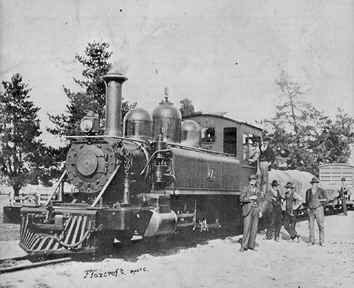
To work these new narrow gauge railways, two pattern engines were ordered from the Baldwin Locomotive Works in Philadelphia, USA. Both were tank engines having three coupled axles, with leading and trailing pony trucks. Essentially identical in appearance, the significant difference between these two 2-6-2T engines was that whereas No. 1 was a simple expansion engine with a single cylinder and piston on each side, No. 2 was built on the Vauclain compound system and was thus provided with both high and low pressure cylinders. In addition to these two engines, fifteen were built to the same design at the Victorian Railways' Newport Workshops, completing the "NA"; (Narrow Gauge Class A) class. Only No. 4 of the V.R.-manufactured engines was a compound, the rest being simple expansion engines. Put to work on the new lines, these locomotives soon proved themselves to be very successful in operation. With an operating weight of 35 tons and a maximum axle load of almost 9.5 tons, they were more than equal to the tasks initially set them, hauling trains of up to 70 tons on the steep gradients of 1 in 30 and up to 265 tons on the easier Whitfield line.
Working difficulties
From the very outset, Victoria's narrow gauge railways proved to be very uneconomical in operation and were plagued with continuing financial losses. A significant expansion in traffic demands by the early 1920s only made the situation worse, principally as a result of the by then limited capacity of the little NA class locomotives. The more they carried, the more money they lost and the more they wore themselves out being called upon to work far harder than intended. For example, at that time no less than seven trains per day were arriving at Colac from Beech Forest and Crowes, although the train loads were comparatively small as dictated by the geographical limitations of the line. Some idea of the amounts of freight and the number of passengers being carried may be gained from the following table showing traffic in the year 1920/21:
| LINE | TONS OF FREIGHT | NO. OF PASSENGERS |
| Wangaratta to Whitfield | 7,954 | 17,154 |
| Colac to Beech Forest and Crowes | 45,204 | 34,421 |
| Upper Ferntree Gully to Gembrook | 28,134 | 50,754 |
| Moe to Walhalla | 18,800 | 9,738 |
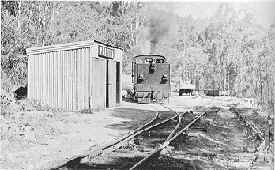
It can easily be seen that the lines which were most difficult to work were those carrying the most business, be it passengers into the Dandenong Ranges in the case of the Gembrook line, or farm produce and timber out from the Otway Ranges and from the Upper Thomson River districts. A good example of the poor economics of these railways was the Beech Forest line which, with earnings as low as 3 shillings (30 cents) per train mile, was costing the Victorian Railways 9 shillings (90 cents) per train mile to run. Double-heading of locomotives was not then permitted on narrow gauge lines but in any event would not have resulted in any great saving in costs, since there would be two crews to pay and two engines to operate. Thus local prosperity and increased activity on the narrow gauge lines only increased their financial deficit.
Photo: G42 shunts the dead end siding at Platina, 4 miles from Walhalla. (E. Stephens, John Buckland
collection)
The need for larger locomotives it soon became imperative to consider the use of much larger engines to haul increased loads, reduce train mileages and thereby reduce, if not eliminate, the Victorian Railways' losses on the narrow gauge lines. The very nature of these railways, with their 1 in 30 grades and countless curves precluded the use of really big engines, having 8 or 10 coupled driving wheels. Such engines would not have been able to negotiate the curves and loading gauges were restricted in both height and width. It was therefore decided to investigate the use of articulated locomotives, which were by then in use around the world in various forms and on many railways, particularly those of either narrow gauge or which were lightly laid through sparsely populated countryside, both characteristics being present on the Victorian narrow gauge lines.
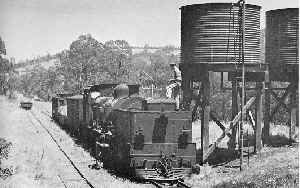
Photo: G42 stops for water at Gould on the Moe-Walhalla line in January 1954 only 5 months before this line closed (Late A. Lyell, John Buckland collection)
Two Beyer-Garratt locomotives, designated G class, were imported from Beyer Peacock, Manchester in 1926. Given road numbers 41 and 42, these locomotives soon took over the traffic on the Moe-Walhalla line (G42) and the Colac-Beech Forest-Crowes line (G41). After closure of the remnant of the Moe-Walhalla line in 1954, G42 was transferred to Colac where it served until closure of that line in 1962. This locomotive has now been restored by the Puffing Billy Preservation Society.
Decline and Closure
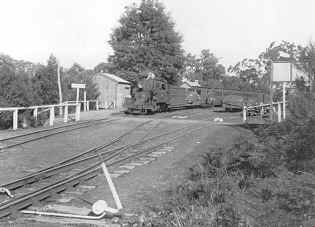
A gradual decline in patronage due to the increasing use of the motor car brought an inevitable reduction in services; fewer people used the trains because they ran less often and the familiar vicious circle quickly hastened the run-down.
On the Colac-Beech Forest-Crowes line, the situation was further complicated by a virtual cessation of traffic offering following a number of serious bush fires through the Otway Ranges, but the progressive reduction of services took place on all four of the narrow gauge lines. They all lingered on through the 1939-45 war, but after the cessation of hostilities it soon became obvious that continued operation would be economically disastrous.
Photo: A typical Puffing Billy mixed train of the 1920's at the first Belgrave station. (PBPS Archives)
| LINE | DATE CLOSED | TOTAL TRAFFIC CARRIED 30/6/49-30/6/54 (5 YEARS) |
|
| Goods (tons) | Passengers | ||
| Wangaratta-Whitfield | 12/10/53 | 16,416 | 1,936 |
| Upper Ferntree Gully-Gembrook | 30/04/54 | 13,142 | 35,561 |
| Moe-Walhalla, closed beyond Platina | 01/04/44 | 37,596 | 14 |
| closed beyond Erica | 14/10/52 | ||
| closed entirely | 25/06/54 | ||
| Colac-Crowes, closed beyond Ferguson | 09/12/54 | 58,790 | 79 |
| reopened to Weeaproinah | 19/01/55 | ||
| closed entirely | 30/06/62 | ||
Now see the story of the rebirth of Victorian Narrow Gauge Puffing Billy is Reborn.
The text and images on this page are Copyright © 1980, 1997 Puffing Billy Preservation Society.
The text is reproduced from "G42, Puffing Billy's Big Brother, A Pictorial History of a Beyer-Garratt in Victoria, Australia", written by Graham Hocking, Ron Peach and John Thompson.
